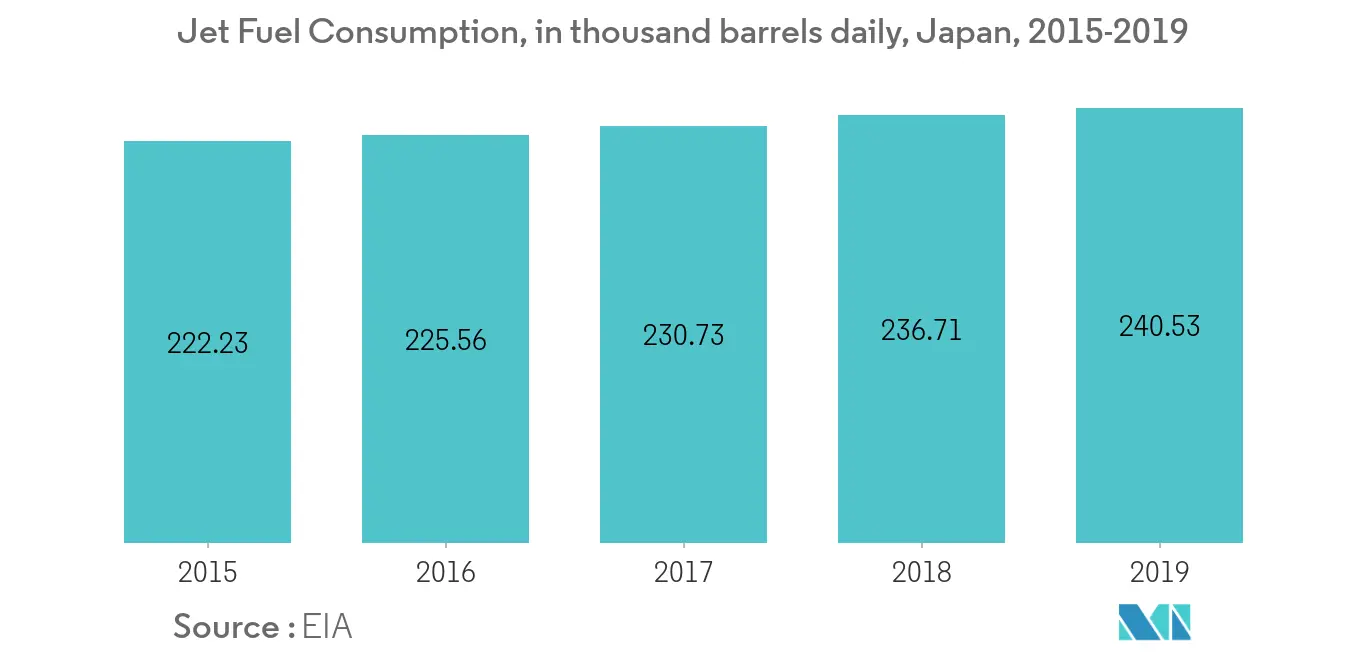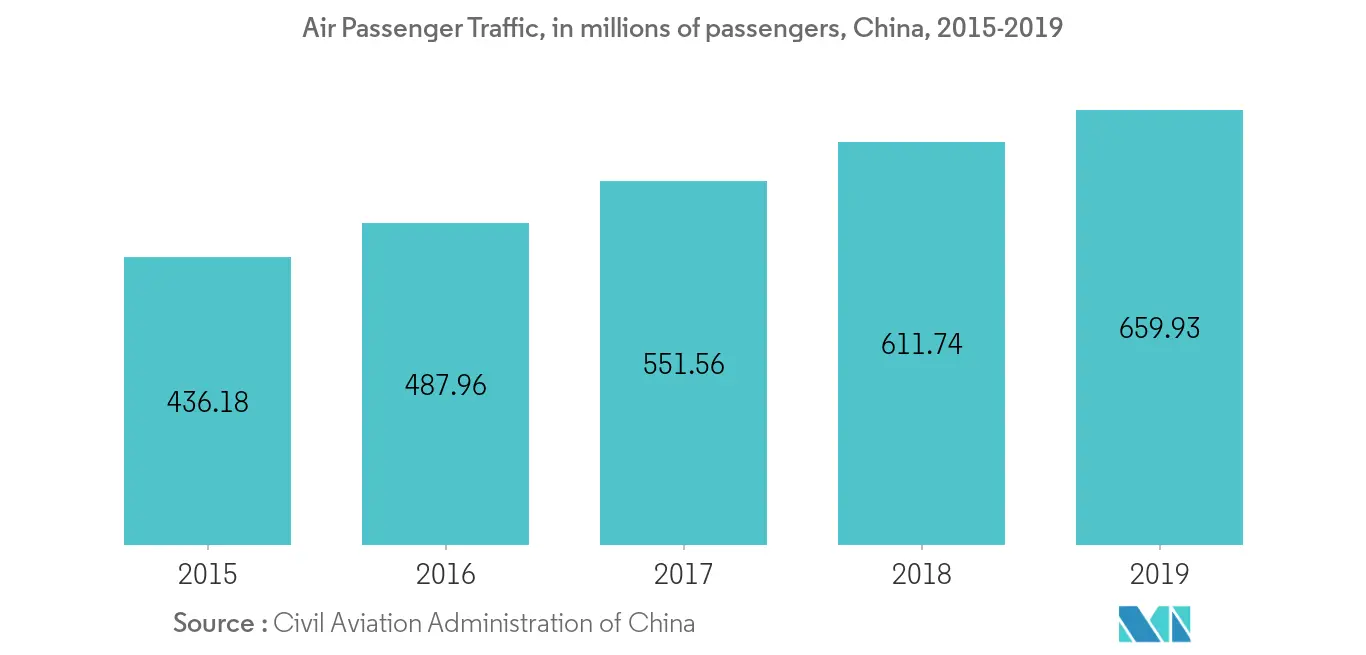Market Trends of Asia-Pacific Commercial Aircraft Aviation Fuel Industry
This section covers the major market trends shaping the APAC Commercial Aircraft Aviation Fuel Market according to our research experts:
Air Turbine Fuel (ATF) Type to Dominate the Market
- Aviation turbine fuel (ATF) is a colorless, combustible, straight-run petroleum distillate liquid. Its principal uses are as jet engine fuel. The most common jet fuel worldwide is a kerosene-based fuel classified as Jet A1. It has a flash point minimum of 38 degrees C (100°F) and a freeze point maximum of -47 degrees C. It is widely available outside the United States.
- Jet-A1 is likely to remain a dominant aviation fuel in terms of consumption, followed by the Jet-A type. However, Jet-A has the same flash point as Jet A1, but a higher freeze point maximum (-40°C). It is supplied against the ASTM D1655 (Jet A) specification.
- Researchers are expected to develop algorithms that can allow international aviation organizations to predict non-volatile particulate matter (nvPM) emissions from certain engines operating at cruise altitudes. Hence, such ongoing developments are expected to increase the demand for Jet A fuel (air turbine fuel) during the forecast period.
- On the other hand, the jet fuel demand, which according to China's civil aviation administration, decreased by 68.5% for civil aviation flights in April 2020 compared to the previous year. In April 2020, China operated 253,621 scheduled flights in April 2020, compared to 441,818 in April 2019.
- According to IATA, the total number of domestic scheduled air passengers in Japan was 100.73 million, registering a 4.8% growth compared to the previous year. Therefore, with an increase in the number of passengers, the consumption of jet fuel reached a total of 240.53 thousand barrels daily in 2019, driving the market studied.
- In India, according to Petroleum Planning and Analysis Cell, the jet fuel demand as of 2019, stood at 178,000 barrels per day, which increased from 110,320 b/d in 2010. If the growth of air traffic remains robust, the aviation fuel market is likely to grow in the coming years.
- Therefore, based on the above-mentioned factors, air turbine fuel type (ATF) is expected to dominate the commercial aircraft aviation fuel market in Asia-Pacific region, during the forecast period.

China to Dominate the Market
- China is one of the largest aviation fuel markets globally, and it is also one of the largest in terms of air passengers carried. As of 2019, domestic passengers in China were the second largest in the aviation market after the United States.
- With close to 4 billion origin-destination (O-D) passenger journeys worldwide in 2018, domestic routes within China provided the largest incremental growth globally in the number of passenger trips, adding just under 50 million journeys.
- According to Boeing, China is expected to become the world's largest domestic aviation market by 2028. It has been supported by the fact that 236.5 billion Revenue Passenger Kilometers (RPKs) were flown in the domestic Chinese market in 2008, which increased to 800.7 billion in 2018. Hence, by 2028, Boeing expects 1,740.1 billion RPKs to be flown in China.
- Moreover, the international traffic to and from China had more than doubled since 2003, from 50 million to more than 110 million at the end of 2018. The overall annual growth rate of passengers to and from Chinese airports has increased by 9.6% until 2018 compared to 2003. Hence, the robust demand for air travel has led to the growth of the aviation fuel market in China.
- Therefore, with an increase in domestic travel, which accounts for more than 85% of the air traffic in China, the demand for aviation fuel is expected to increase during the forecast period.


